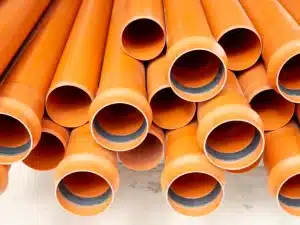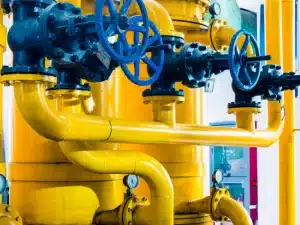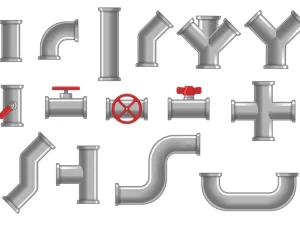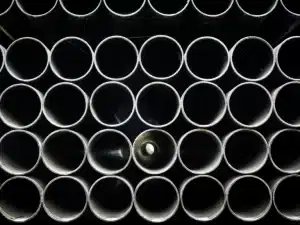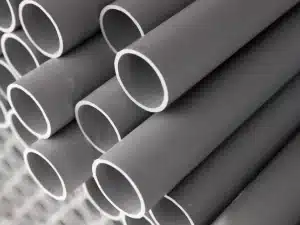Flange Maintenance Tips to Ensure Pipeline Safety in Oil and Gas Operations
In the oil and gas industry, every connection matters — even flanges. A well-established flanges suppliers are known to offer a range of superior quality flanges, which can result in the making of trustworthy and secure piping systems. Even the most advanced flanges for the oil and gas industry need regular upkeep to ensure they don’t fail. Without proper maintenance, flanges can cause hazardous leaks, damage the environment, or result in other catastrophic effects. Hence, preventive maintenance is not only a choice; it’s a compulsion. This blog offers professional guidance on protecting investment, risk management, and optimizing oil and gas industry system performance through strategic procedures.
Understanding Flanges in Oil & Gas Pipelines
As mechanical parts, flanges connect sections of pipe, valves, and pumps, along with other equipment. Highly pressurized systems like oil and gas pipelines function as critical sealing points that ensure the system’s integrity, ensuring no leaks.
Each type of flange comes with blind, weld neck, slip-on, and socket weld, and each one of them is selected according to the application’s pressure, temperature, and type of fluid. But in all systems considered reliable, this fact is common: flanges are correctly installed, maintained routinely, and quite sturdy. Durable flanges suppliers in the oil and gas sector must be experienced in the field to ensure these components can withstand stringent requirements.
Common Flange Issues That Affect Pipeline Safety
Even minor flange performance issues can affect safety. Here are commonly reviewed issues or concerns to watch for:
- Corrosion: An issue that is caused by exposure to moisture, saltwater, and chemicals, especially in offshore environments.
- Gasket failure: Can occur due to incorrect installation of a gasket, improper materials used, or wear and tear over time.
- Improper alignment: Uneven surface conditions or misaligned bolts can also produce a space or gap, making it impossible to create any situation for pressure loss.
- Over- or under-torqued bolts: Wrong-torqued bolts can cause leakage, void space, or damage the faces of a flange.
- Metal fatigue: Flanges over time can be affected by material weaknesses through vibrations and temperature change cycles.
All of these issues and more can be avoided by evaluating regularly and utilizing quality components from trusted flange suppliers.
Preventive Maintenance Tips for Pipeline Flanges
Proper upkeep of flanges is all about routine maintenance. These are the key preventive measures to follow:
- Inspect flanges during every shutdown: Look for rust and leaks, and check alignment for all prevailing concerns.
- Use the correct torque tools: Follow manufacturer specifications when tightening bolts to avoid damaging them.
- Replace gaskets regularly: Make it a habit to dispose of gaskets after each use.
- Clean the faces of flanges: Dust, oil, and chemical residues should be wiped clean before reassembly.
- Use protective coverings: Anti-corrosive flake paint is recommended for flanges exposed in the marine environment or humid conditions.
- Observe the conditions: Employ pressure sensors and leak detectors to identify issues before they escalate.
These simple actions go a long way in preserving the performance of flanges for oil and gas industry pipelines.
Best Practices During Flange Installation
Correct installation prevents future problems. When installing flanges:
- Always align flange faces properly before bolting.
- Clean all contact surfaces to remove any debris or residue.
- Install bolts in a cross-pattern to apply even pressure.
- Use only approved gaskets that match pressure and temperature ratings.
- Avoid reusing hardware like bolts or washers—they may have lost their strength.
Even the strongest flanges in oil and gas systems can fail if installed incorrectly. Taking the time to get it right the first time will save you hours of troubleshooting later.
When to Replace a Flange
Repairs can only go so far. Sometimes, a flange must be removed and replaced. Here’s when to consider it:
- Visible cracks or deep corrosion on the flange body.
- Persistent leaks that return despite new gaskets or bolts.
- Flange faces that are warped or no longer seal evenly.
- Evidence of metal fatigue, especially in older installations.
- Loss of compliance with current industry pressure ratings or specs.
When in doubt, consult your flanges suppliers—they can help assess damage and recommend the right replacement part.
Benefits of Regular Flange Maintenance
Sticking to a flange maintenance routine offers real-world advantages:
- Safety first: Well-maintained flanges prevent leaks and reduce the risk of accidents.
- Cost control: Avoid emergency shutdowns and expensive equipment replacements.
- Longer service life: Maintenance extends the lifespan of flanges in oil and gas systems.
- Ensured compliance: Fulfilled legal requirements and passed inspections.
- Stability: Minimizes system interruptions and keeps motors running in optimal condition.
Working with professional flange suppliers gives you the assistance and reliable parts you need to keep your system working efficiently and protect your investment over time.
Conclusion
As with every system, keeping pipelines safe requires careful work and specifics. Reliable suppliers can be sourced for flanges, which helps preserve the operational state of oil and gas pipelines, thus sidestepping costly breakdowns. Responsible care for oil and gas flanges entails preventive maintenance, scheduled inspections, and accurate and prompt removals and replacements. Such meticulousness makes a positive and dependable difference, and caution in flanges of the oil and gas industries makes all the difference in safety and dependability.
FAQs
How often should pipeline flanges be inspected in oil and gas operations?
Inspect flanges every six months and perform detailed checks during annual shutdowns. Frequent monitoring helps detect corrosion, leaks, or alignment issues early, preventing failures in critical flanges in oil and gas systems.
What are the most common causes of flange failure?
Flange failures often result from corrosion, gasket wear, improper alignment, incorrect bolt torque, or incompatible materials. Regular maintenance and quality parts from trusted flanges suppliers help avoid these issues.
How do I know if a flange needs to be replaced rather than repaired?
If a flange has deep corrosion, visible cracks, warping, or persistent leaks after repair, it’s safer to replace it to maintain the integrity of your flanges for the oil and gas industry system.
Are there industry standards for flange maintenance schedules?
Organizations like ASME and API provide maintenance guidelines based on pressure, temperature, and environmental exposure. Following these ensures compliance and helps protect your flanges in oil and gas equipment.
What type of gasket should I use for high-pressure oil pipelines?
Use spiral wound or ring-type joint (RTJ) gaskets for high-pressure applications. These offer superior sealing performance and durability in demanding flanges for oil and gas industry pipeline conditions.
How can I prevent corrosion on flanges in offshore environments?
To prevent corrosion, use stainless steel flanges, apply protective coatings, and install cathodic protection systems. These steps significantly extend the lifespan of flanges in oil and gas systems in offshore environments.

